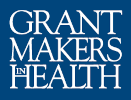Cara V. James, PhD, President and CEO, Grantmakers In Health
Like many other organizations, GIH released a statement earlier this month supporting an end to racism and violence against people of color. I am fortunate to work with a team that truly believes in the mission, vision, and values of our organization. Values such as equity, collaboration, respect, and transparency. It has been three months since I joined Grantmakers In Health as President and CEO, and I had intended to spend my time this month talking about what I have been doing and share what I have learned since I began. However, due to recent events, I am instead going to share some of my reflections on the times, and on what we need to do to implement meaningful action to build a more just and equitable future.
Like many people around the country and the world, I am saddened and angered by the events of the recent months. I’m not just talking about the senseless killings, the blatant racism experienced by a black man birdwatching in Central Park, or the fact that a video seems to be required for black and brown people to have a chance at justice. I’m also talking about the people who went home and died because they could not get tested for the coronavirus; those who died because they were deemed essential, but were not given proper protective equipment or health insurance; and those who died because years of neglect and inequity put them at increased risk for serious complications. I’m also talking about the lack of data necessary for us to understand the magnitude of disparities and where they exist. I’m talking about the minority-owned and small businesses that did not get Paycheck Protection Program funds, and the communities of color that have received fewer testing sites. I’m talking about the children of color who have lower participation rates in distance learning.
Mixed in with the sadness and anger is frustration and weariness. These are not new issues. Police brutality, black men being falsely accused of threatening white women, health disparities, and the inequitable distribution of resources are as old as the day is long, as is blaming victims for what happened to them. I’m tired of seeing the same stories on the news with only the names and the towns changed. I’m tired of the overwhelming evidence of inequities and of the minimal progress we have made in addressing them, and I’m frustrated that people are still questioning if they exist, and whether we need to collect data on race and ethnicity.
But I’m also hopeful. I’m hopeful because we have seen such a significant increase in the number of people standing up, saying enough is enough, and demanding change. Like many others, I do think that this is an inflection point where meaningful change is possible. However, I am not naïve enough to think that everyone agrees that we have a problem, that there are systemic issues driving the inequities we see, or that we need to do things differently.
Change is hard. It takes time, and it takes people working together. In my office, I have several photographs, including images of Harriet Tubman, Abraham Lincoln, the Harlem Hellfighters, and participants from the 1963 March on Washington. They remind me of what those who came before me went through, and that ordinary people can do extraordinary things. Across the country and around the globe, people of all ages, races, ethnicities, and geographies are registering their frustration and demanding change, as are innumerable philanthropic, commercial, nonprofit, and other organizations who have issued statements calling for action. These are important steps, but we need to do more to advance the cause and sustain the momentum. Here are some additional steps we need to take.
Understand that achieving health equity is a marathon and not a sprint
Our country has had over 400 years to create and sustain inequities, and that history cannot be erased overnight. Rosa Parks was arrested in 1955, but nine years passed before the Civil Rights Act of 1964 was enacted, and we are still striving to realize the full potential of that law. Achieving health equity is not going to happen in 30, 60, or 90 days, and it will not happen in a year, or even two. It will be a long journey replete with many obstacles. Some actions will be easier to take than others, and addressing the systemic problems driving disparities will take time. For example, supporting better collection and analysis of social and demographic data is easier to do than changing the impact your zip code has on your health and educational opportunities. Moreover, achieving health equity is not possible without addressing the social determinants of health, including housing, employment, education, transportation, and food, or tackling the tough issues that lead to systematic inequities. It is important to understand and plan for a long process, and to set up pit stops where those working to achieve health equity can rest and refuel.
Make health equity a priority
We need to stop paying lip service to health equity. Many organizations say they value health equity, have a health equity or a diversity and inclusion office, or support programs to reduce disparities. But as has often been said, “Don’t tell me what you value. Show me your budget and I will tell you what you value.” Health equity work is rarely well funded or well-staffed. If your organization focuses on health equity, ask yourself how the size of that team compares to the size of the teams working on other areas in which you focus. What does their budget look like relative to other program areas? Who does the individual leading that work report to, and is that different from other areas? When times are financially tough, what happens to your equity programs? If there are significant discrepancies between your health equity work and other areas, you may need to ask yourself whether it is truly a priority and adjust accordingly.
Strengthen the role of leadership
Everyone has an important role to play in achieving health equity, but the role of philanthropic, health, community, business, and nonprofit leaders is critical. In subtle and overt ways, leaders signal what is important. What they talk about in public and private meetings, what is on their performance dashboard, what they discuss with their board of directors, and what they invest their professional and financial capital in are all indicators of what they value. If we are to achieve health equity, we need more leaders to make this a priority, and to sustain focused attention on these issues. Too often leadership’s interest in and engagement with health equity stops at hiring a diversity and inclusion officer or a health equity program director. We will not achieve health equity overnight, and we need leaders who are willing to commit to the long, tough work ahead.
Engage in humble inquiry
The concept of humble inquiry comes from Edgar Schein and refers to “the fine art of drawing someone out, of asking questions to which you do not already know the answer, of building a relationship based on curiosity and interest in the other person” (Leadership and Change 2016). Humble inquiry can be used to foster collaboration, openness, trust, and change. Although it was developed as a leadership tool, the concept is broadly applicable to those striving to achieve health equity. Activities during the last few months have led many people and organizations to take a stand on racial discrimination and violence against people of color, and have increased many people’s interest in enacting change. For some organizations, this may be the first time they have engaged in these issues. I encourage all of us to approach our work through the lenses of cultural humility and humble inquiry. Take a moment to understand the environment in which you are engaging. Explore the work that has already been done and identify and get to know the key actors. On several occasions, I have seen individuals and organizations enter a space related to health equity, blithely ignoring those already there. Think about how you might form partnerships to support or expand existing programs before developing a new effort. Foster relationships with those you are trying to help. Approach them with an open mind, understanding that you can learn from them as much as they can learn from you.
Tackle the tough issues
Addressing health disparities is not easy work. It is an uphill battle, and every so often you get a picture of how steep the gradient is. We often develop strategic plans that focus on low-hanging fruit and easy wins, but culture change and achieving health equity will require us to move outside of our comfort zones and focus on the drivers of health disparities. We need to think about changing the systems that have led to inequitable practices, financial incentives that reduce access to care, and the maldistribution of resources. To some extent our health system is built on a foundation of inequity because a person’s access to care is partially dependent on whether they have health coverage and if they do, which type of coverage they have. It will be difficult to achieve health equity if we don’t identify and try to mitigate these and other systemic issues contributing to inequities.
Develop a robust pipeline
Having a robust pipeline from which to recruit future equity leaders is also critically important. Over time, a number of programs that were established to train and support diverse cohorts of future leaders and minority-serving institutions have ended or seen a decrease in funding. We need to support training and development to ensure there is a robust pool of diverse and qualified candidates for leadership across all sectors of our society. One challenge is that in order to have the largest pool to choose from, you need to start early, but starting early tends to be riskier in terms of guaranteeing program outcomes such as college, medical school, or law school graduation rates. Forty-two percent of African Americans and 56 percent of Hispanics have a high school diploma or less, compared to 31 percent of non-Hispanic whites (U.S. Census Bureau 2018). Increasing support for training programs increases the likelihood of having a diverse workforce and an array of individuals ready for leadership positions in health care, academia, philanthropy, community, and business.
Our country has experienced significant upheaval over the last 90 days that raised the collective awareness of inequities in health, work, education, and policing. These changes have led to increased calls for action and offer a pivotal moment to enact meaningful steps towards achieving health equity. We must not squander this opportunity.
References
Leadership & Change Magazine. “Creating positive relationships and effective organizations.” Accessed June 11, 2020.
U.S. Census Bureau. “Educational Attainment in the United States: 2018.” Last modified on February 21, 2019.

